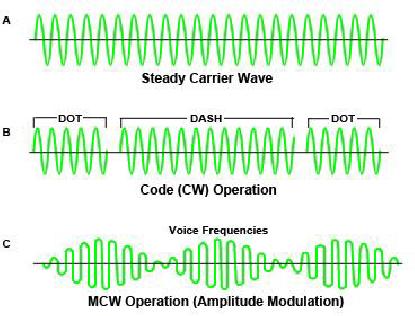
Figure 2-10 -- Hertzian waves.
Nondirectional Radio Beacon
Nondirectional Radio Beacons (NDB) are a class of homing facility.
NDB
Nondirectional indicates that these facilities provide a signal that is used for homing
equally in all directions. Homing essentially means that the pilot is keeping the nose of
the aircraft pointed at the radio signal while proceeding toward the sending facility.
NDBs are intended for use with airborne direction-finding equipment to provide pilots
with bearing information and for aiding approach when installed in the vicinity of an
airport.
Low- or medium-frequency radio beacons normally operate in the frequency band of
190 to 535 kHz and transmit a continuous three-letter identification except during voice
transmission. Voice transmissions are made on radio beacons unless the letter "W"
(without voice) is included in the class designator. UHF NDBs operate in the frequency
band of 275 to 287 MHz.
When the radio beacon is installed in conjunction with the ILS marker, it is normally
called a Compass Locator and can be used for navigation at distances of approximately
15 miles or as authorized in an approach procedure.
2-26

